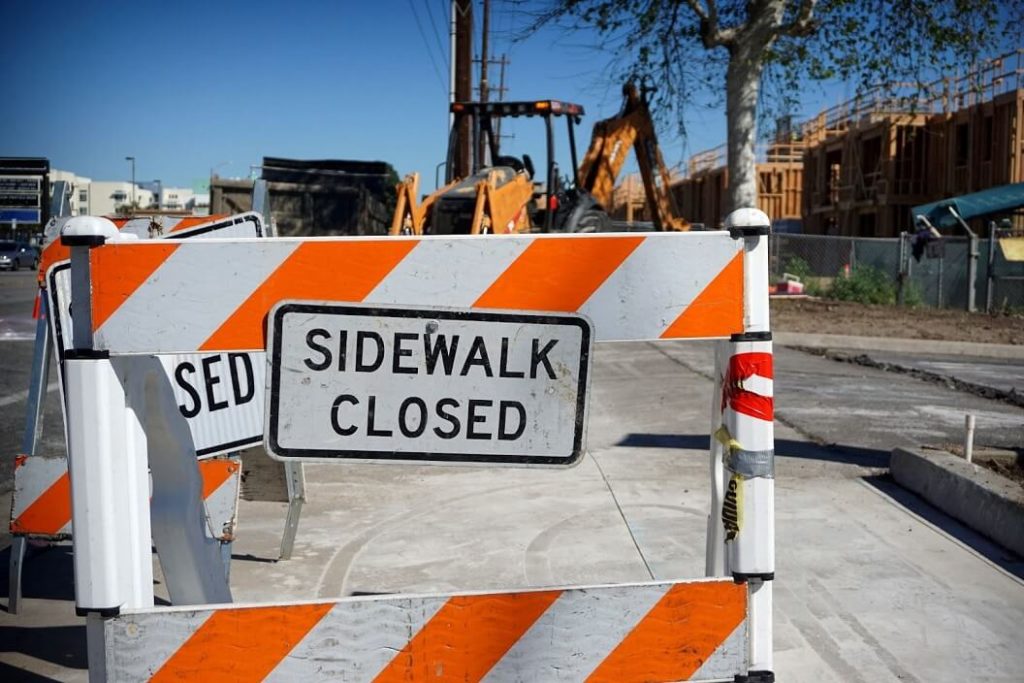Who’s responsible for pedestrian safety around construction sites?
Construction Accident - October 18, 2022
If you were injured while walking past a construction site, you might assume the incident was a stroke of bad luck – expensive bad luck, as you’ll have to pay for your injuries. But you could be compensated in full if someone else was responsible.
With the help of an experienced Chicago construction injury lawyer, you could hold the construction company, contractor, property owner, or other party accountable.
Call Horwitz, Horwitz & Associates at (800) 985-1819 for a risk-free, cost-free consultation. In the meantime, keep reading to learn who could be responsible for your injury.
Potentially Responsible Parties
The following parties are responsible for maintaining pedestrian safety on construction sites:
- Construction company – The company running the job has a duty to keep the premises safe for both the workers and passersby.
- Construction workers – Workers on the job have a duty to follow procedures and keep the site safe for both themselves and others, including keeping hazards (tools, equipment, personal items) away from walkways.
- Contractor – A construction job may be put together by a construction company, which may contract the job out to another construction company, who will also be responsible for keeping the site safe.
- Subcontractor – Subcontractors perform smaller parts of the overall construction job. Plumbers or carpenters might be subcontracted from an outside company to provide services to the contractor, and these parties are also responsible for keeping their job site safe.
- Property owner – The property owner who has ordered the construction must hire licensed and bonded companies. They may be liable for damages caused to workers or persons passing over their property that is under construction.
- Third-party companies – Third-party companies may be present at the construction site to drop off building materials, or even lunch. Third-party contractors that are responsible for causing injury will be liable for damages.
- Manufacturer – If a manufacturer produced a defective product or failed to warn about the dangers of a product, and an injury resulted, they could be liable for the related damages.
Mandatory Pedestrian Safety Procedures Around Construction Sites
Certain procedures help reduce potential injury and support worker and pedestrian safety. The following are important safety procedures that should be in place on and around construction sites.
Traffic Control Devices
Ensuring the smooth flow of traffic in and around the construction site will help to reduce accidents and other issues. Traffic control devices include:
- Crash barriers – These keep the workers on the site safe and also prevent cars from veering into the site accidentally.
- Channelizing devices – These include parking cones and buckets and are meant to control the speed and direction of traffic to keep the construction site safe.
- Signage – Clear and obvious signs help to keep both workers and the public informed on where is safe to move and where is prohibited.
- Traffic details – When the construction site is especially populated and interacts with the local traffic, having workers or even the police on-site performing traffic detail will help to ensure that traffic flows well and does not cause accidents.
Pedestrian Pathways
Ensuring that there are clearly marked pedestrian pathways through a construction site that has throughways is important. When pedestrians know where to walk, they are able to stay within safe zones and help reduce the risk of injury.
If a pedestrian is injured on a construction site due to poorly marked or even non-existent pedestrian pathways, they could be entitled to compensation.
Detectable Edging
Detectable edging is placing a guard or barrier around the edge of the construction site so anyone passing by is clear where the public walkway ends and where the construction site begins.
Detectable edging devices that add safety to your construction site include:
- Fences – Placing a fence around the construction site will ensure that access is allowed only to those persons with permission, and can also help keep safety hazards contained on the site.
- Maintain space near the fences – Putting up a fence helps to support safety only if hazards are not placed too close to the fence. Always make sure to leave space between objects and the fence to prevent the potential of accidents.
Temporary Curb Ramps
When traffic patterns change and driving over curbs is necessary, putting up temporary curb ramps can help pedestrians safely navigate the walkway, and also help construction vehicles move more carefully over the site.
Injured walking past a construction site? Our attorneys can help.
If you were hurt while walking by a construction site, you could be entitled to compensation for your injuries and related expenses.
For a risk-free, cost-free assessment of your case, schedule a consultation or call (800) 985-1819 to connect with an attorney from Horwitz, Horwitz & Associates.



